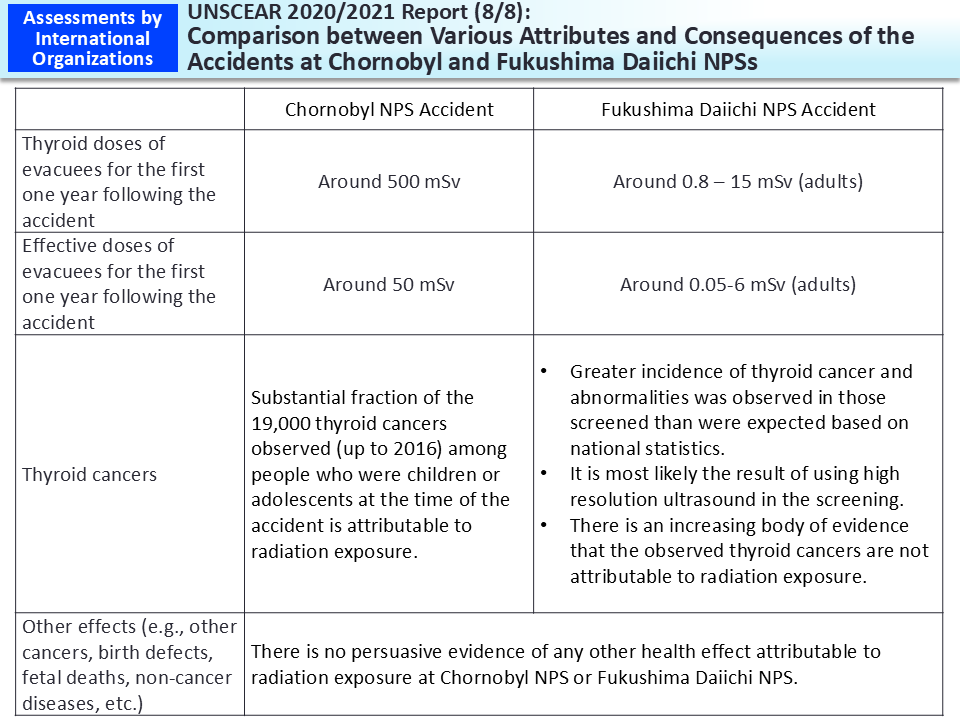UNSCEAR 2020/2021 Report (8/8): Comparison between Various Attributes and Consequences of the Accidents at Chornobyl and Fukushima Daiichi NPSs
The UNSCEAR 2020/2021 Report compiles major characteristics and features of the accidents at Fukushima Daiichi NPS and Chornobyl NPS, as well as estimated exposure doses and health effects due to these accidents regarding radiation workers and the general public. Results of the comparison concerning some items are shown in the table above.
The Report states that the consequences of the accident at Fukushima Daiichi NPS were much milder than those at Chornobyl NPS. As one of the reasons, it points out that the reactors at Fukushima Daiichi NPS had specifically designed containments within which most of the radionuclides released from the molten fuel were retained; by contrast, the reactor at Chornobyl NPS did not have a containment and the core was directly exposed to the atmosphere as a result of the explosion that occurred at the beginning of the accident. Additionally, cited major reasons include the rates of dispersed radionuclides deposited over the ocean and those deposited over the land mass, the transfer of radionuclides to agricultural products, the binding or fixation of radioactive cesium in soil, protective measures in respect of people and foodstuffs after the accidents, and differences in the regulations.
[Relevant parts in the Report]
- UNSCEAR 2020/2021 Report (prepared based on paragraph B1 on pages 189 to 198, ANNEX B)
- Included in this reference material on March 31, 2023
- Updated on March 31, 2024

